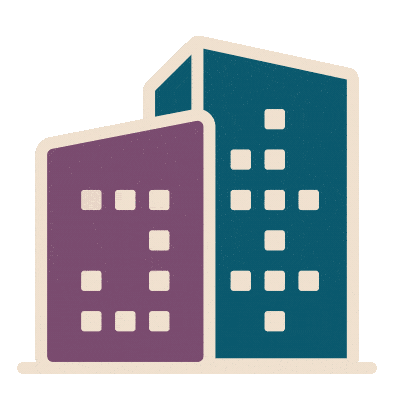David Fernández Ortega: "As a WELL AP, I love spreading knowledge"
David Fernández Ortega is a WELL AP who is passionate about sustainability and how the built environment can affect the quality of human health and well-being.
After becoming involved in projects pursuing WELL Certification, he describes his experience with WELL as, “more than a seal, it’s a feeling. It’s a feeling that compels you to achieve certification not just for the building but for the impact it will have on the health of the people who occupy it.”
Learn more about how the WELL AP credential aligns with his personal and professional values for increased health, well-being and safety efforts in people-first places:
1. How did you first hear about the WELL AP? What got you excited enough about it to apply, study and take the test?
I first heard about WELL Certification in 2016 when I was working on projects in Panama that were pursuing LEED certification, and I wanted to further educate myself on sustainability issues.
Since I was already gaining knowledge and experience in sustainability, it seemed appropriate to focus on training related to the health of the buildings’ tenants (human health) and not just how the building itself works (earth health).
2. What’s one way becoming a WELL AP has impacted your life and/or career?
Studying for WELL Certification made me more aware of how our health is directly affected by aspects that I had not previously considered, such as acoustics or lighting. Even the quality of the water we drink and the food we eat directly influence our concentration and performance.
3. What are some things you’ve been able to do (or you plan to do) as a WELL AP you couldn’t before? Why are those things important to you?
For me, it’s vital to promote healthy living habits. It makes me feel comfortable working in this field that shares my vision of “how to live” so that tenants can benefit from multiple aspects of occupying a WELL Certified building.
As a WELL AP, I love spreading WELL knowledge from clients, to colleagues or friends who ask me about which materials to choose for their new home.
4. Did anything about the WELL AP surprise you? What was it? How would you prepare WELL AP candidates for that?
WELL Certification has a very holistic vision that focuses on aspects that go beyond the building itself and extends to transmitting values to the tenants that will directly impact their lives. A project owner isn’t only investing in their building, they’re also investing in the health of their occupants and his employees.
In my experience, working on a WELL building project makes you value other aspects of life that you had not previously taken into account. WELL is more than a seal, it’s a feeling. It’s a feeling that compels you to achieve a certification not just for the building but for the impact it will have on the health of people who occupy it.
5. What’s something about the WELL AP–or the WELL movement in general–that isn’t often discussed, but you think deserves more attention?
Implementing WELL Certification in homes deserves more attention in the WELL movement.
Many of us are working at home due to the COVID-19 pandemic, and I believe that implementing aspects of the WELL Building Standard in our own homes would result in a better quality of life.
I would also like to see WELL implemented in schools and universities since children are the future and should grow up in healthy spaces.
6. Do you have any advice you’d give potential WELL AP candidates?
Don’t hesitate to prepare for the exam and take it seriously, as it will make you more knowledgeable about the WELL Certification process and lay the framework for applying different concepts and features to future projects.
WELL is backed by strong scientific evidence, so having a clear understanding of each feature will help you find the best strategies for each project and know how to employ it.
7. What does well-being mean to you? How do you incorporate it into your life and routine?
Well-being is a state of physical and mental balance. Both are strongly related to each other and can’t be separated—I can’t conceive of one without the other. For example, if I go running without taking my mental well-being into account, then I am focused on my “problem” and the training is not good.Consequently, if I don’t exercise regularly, my mental state is greatly affected.
Personally, I incorporate physical wellness through regular running and cycling and mental wellness with daily activities such as walking outside with my dog, chatting with friends and family, cooking or enjoying an evening read. I’m also starting oil painting, but I still have a lot to learn.
8. Is there a specific WELL concept, feature or set of features that have really resonated with you and that you’ve incorporated into your own life?
Many WELL features are important to me, but I’ll highlight one that I have been trying to follow in my daily routine lately: encouraging the purchase of local products, according to feature N13: Ensure Local Food Access. I consider it essential to have local products on my table, soI try to eat a diet that includes 50% fruits and vegetables while at home.
In my professional life, I occasionally work at a sit-stand desk or choose from workstations with natural lighting and views. I’ve also added extra lighting to the office and an ergonomic chair for when I’m seated while working.
In general, I also try to drink more water and monitor my physical activity by analyzing data that can help me improve my performance.
9. How do you think COVID-19 has impacted your WELL AP practice and approach? How do you think that will change going forward?
COVID-19 has definitely affected the way we look at the spaces we inhabit daily, especially our offices and living spaces. In Madrid, people have given high priority to homes with natural light and views of the outdoors.
Many people have also taken special interest in handwashing, ventilation and air quality as a result of COVID-19. That’s why certified markers such as the WELL Health-Safety seal are so important: they provide a sense of security to everyone entering a building because it’s visible proof that health and well-being are a top priority.
Finally, I would be remiss if I didn’t mention the importance of access to vaccination, as indicated in the Promote Seasonal Flu Prevention or Implement Immunization Schedule feature.







